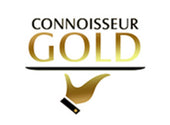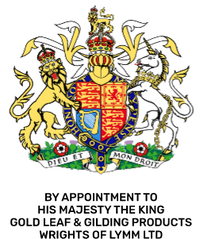Edible Gold Leaf Across the World - Antigua and Barbuda
- by sam@wrightsoflymm.co.uk User
Introduction: A Touch of Gold in Caribbean Luxury
In Antigua and Barbuda, known for its rich cultural heritage and luxurious hospitality scene, edible gold leaf has become a symbol of indulgence and celebration. Whether in fine dining restaurants, upscale resorts, or festive occasions, goldleaf, silver leaf, and shimmering gold flakes have carved out a niche as decorative and flavourful accents. Beyond modern trends, the story of gold leaf in Antigua and Barbuda is intertwined with history, global trade, and the Caribbean’s flair for elegance.
Ancient Origins of Edible Gold Leaf
Although edible gold was first embraced in ancient Egypt, Rome, and Japan, it reached the Caribbean through colonial trade routes. By the 17th and 18th centuries, Antigua and Barbuda—strategically located in the Lesser Antilles—had strong connections with Europe, where edible 23 carat and 24 carat goldleaf were already prized. Over time, these shimmering accents transitioned from medicine and ritual into culinary presentation.
The Arrival of Gold Leaf in Antigua and Barbuda
Antigua and Barbuda’s colonial past brought European customs of wealth display, including the occasional use of edible gold leaf and silver leaf during feasts hosted by governors and merchants. As the islands developed a reputation for hospitality, gold accents became part of the culinary vocabulary, especially in high-status celebrations.
Today, the tradition continues, particularly in luxury hotels and gourmet restaurants where gold flakes, silver flakes, gold dust, and silver dust elevate desserts, cocktails, and even local seafood dishes.
Culinary Uses of Gold Leaf in Antigua and Barbuda
1. Fine Dining and Resorts
Antigua and Barbuda’s thriving tourism industry has made edible 24 carat goldleaf a sought-after attraction. Resorts often incorporate gold flakes or gold dust into champagne, truffles, and cakes, offering guests an unforgettable experience.
2. Caribbean Fusion Cuisine
Chefs creatively combine Caribbean flavors like jerk spices, tropical fruits, and fresh seafood with luxurious finishes of 23 carat goldleaf or silver leaf. For example, a lobster tail garnished with gold dust not only tastes exquisite but also photographs beautifully for social media.
3. Weddings and Celebrations
In Antigua and Barbuda, weddings are grand occasions, and edible gold plays a starring role. Wedding cakes adorned with gold flakes or silver flakes symbolize prosperity and longevity. Similarly, cocktails served with floating gold dust create a festive sparkle.
Beverage Innovation with Gold Leaf
Bars and mixologists across Antigua and Barbuda have embraced edible goldleaf in cocktail culture. High-end rums, champagnes, and fruit-based mixes are enhanced with gold flakes and silver dust, reflecting both tradition and modern flair. Visitors often associate these drinks with Caribbean luxury, making them popular in tourism marketing.
Health and Symbolism of Goldleaf
Historically, edible gold was linked to health, believed to improve circulation and vitality. While science doesn’t fully support these claims, edible 24 carat goldleaf remains safe for consumption. Its use today is more symbolic, representing wealth, celebration, and prestige in Antigua and Barbuda’s culinary scene.
Silver Leaf and Its Role
Though less common than gold, silver leaf and silver flakes are also used in Antigua and Barbuda. They offer a cooler, more understated shimmer, often reserved for pastries, chocolates, and cocktails. Combined with gold dust, the contrast adds a dramatic flair to gourmet dishes.
The Future of Gold Leaf in Antigua and Barbuda
As Antigua and Barbuda continue to position themselves as luxury travel destinations, edible goldleaf is expected to gain even more prominence. With the rise of food tourism and social media appeal, dishes featuring 23 carat and 24 carat goldleaf, along with silver leaf and silver dust, will likely remain highlights in high-end dining experiences.
Conclusion: Timeless Elegance in the Islands
From colonial feasts to modern resort dining, Antigua and Barbuda have embraced edible gold leaf, gold flakes, gold dust, and silver leaf as timeless symbols of elegance. Whether you’re toasting with champagne glistening with silver dust or savouring a dessert topped with 24 carat goldleaf, the experience reflects the islands’ enduring charm and luxury.






